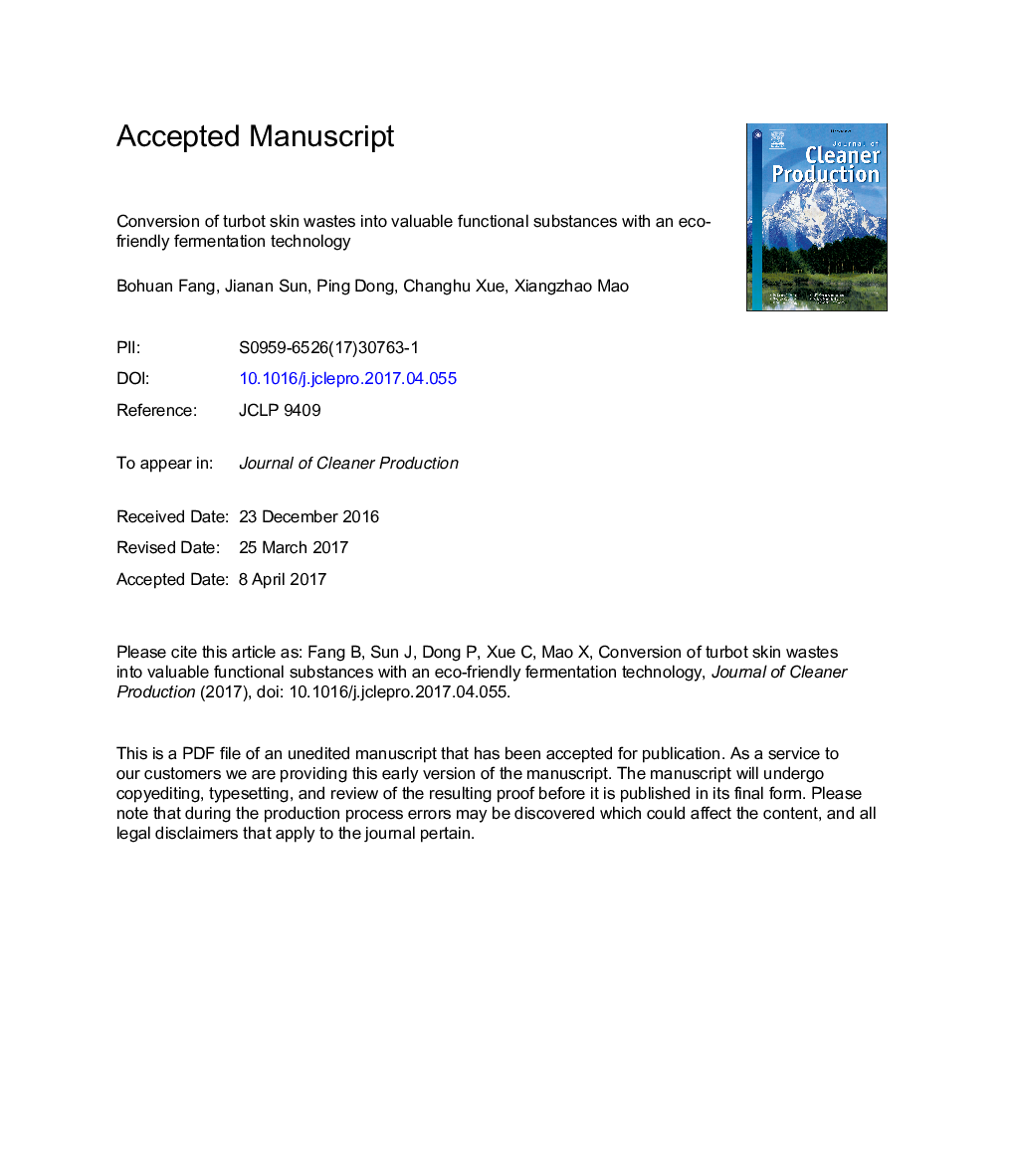| کد مقاله | کد نشریه | سال انتشار | مقاله انگلیسی | نسخه تمام متن |
|---|---|---|---|---|
| 5480992 | 1522098 | 2017 | 43 صفحه PDF | دانلود رایگان |
عنوان انگلیسی مقاله ISI
Conversion of turbot skin wastes into valuable functional substances with an eco-friendly fermentation technology
ترجمه فارسی عنوان
تبدیل زباله های هویج به مواد عملکردی با ارزش با تکنولوژی تخمیر زیست محیطی
دانلود مقاله + سفارش ترجمه
دانلود مقاله ISI انگلیسی
رایگان برای ایرانیان
کلمات کلیدی
موضوعات مرتبط
مهندسی و علوم پایه
مهندسی انرژی
انرژی های تجدید پذیر، توسعه پایدار و محیط زیست
چکیده انگلیسی
Booming development of fishing economy has significantly accelerated the fish waste generation in the world. The disposal of fish waste poses a serious environmental problem. The fish waste contains substantial amount high quality protein, which is an excellent resource of bioactive substance. In the conscious of eco-friendly and economical disposal, converting these waste into high value-added products for industrial applications is of profound implication. In this study, microorganism fermentation was employed and developed for the high-value utilization of discarded turbot skin. Among the various strains, Aspergillus oryzae showed the most promising hydrolysis ability. Under optimal conditions, a comprehensive detailed description of the fermentation process of hydrolysate from Aspergillus oryzae (AOH) is described. Additionally, amino acid compositions, volatile compounds, and antioxidant activity of AOH are studied. Size exclusion chromatography purification could effectively enhance the antioxidant activity. During gastrointestinal digestion, excellent residual antioxidant efficacy can be achieved by AOH and its chelating activity was improved. In physicochemical (temperature, light, pH) stability assays, AOH demonstrated better antioxidative stability in a wide range of pH and temperature conditions, but exhibited sensitivity to sunlight exposure. The results pointed out that turbot skin can be a cheap resource of antioxidant, which has many promising applications in pharmaceutical and food industry for health promotion and food preservation. Finally, fermentative bioprocess could be identified as a clean production which can not only be used for minimizing the impact of environment but also converting fish wastes into valuable functional substances.
ناشر
Database: Elsevier - ScienceDirect (ساینس دایرکت)
Journal: Journal of Cleaner Production - Volume 156, 10 July 2017, Pages 367-377
Journal: Journal of Cleaner Production - Volume 156, 10 July 2017, Pages 367-377
نویسندگان
Bohuan Fang, Jianan Sun, Ping Dong, Changhu Xue, Xiangzhao Mao,
